Hummus has become a popular appetizer, prized for its smooth and creamy texture and rich flavor. This versatile dip, made primarily from chickpeas, is a favorite around the world, although its origins lie in the Middle East.
I first fell in love with hummus in college when I became a vegetarian. Since the main ingredient is chickpeas, this dip is a great source of plant-based protein, as well as fiber and other vitamins and minerals.
In the recipe card below, I share how to make classic, easy hummus with just five ingredients.
More hummus recipes:
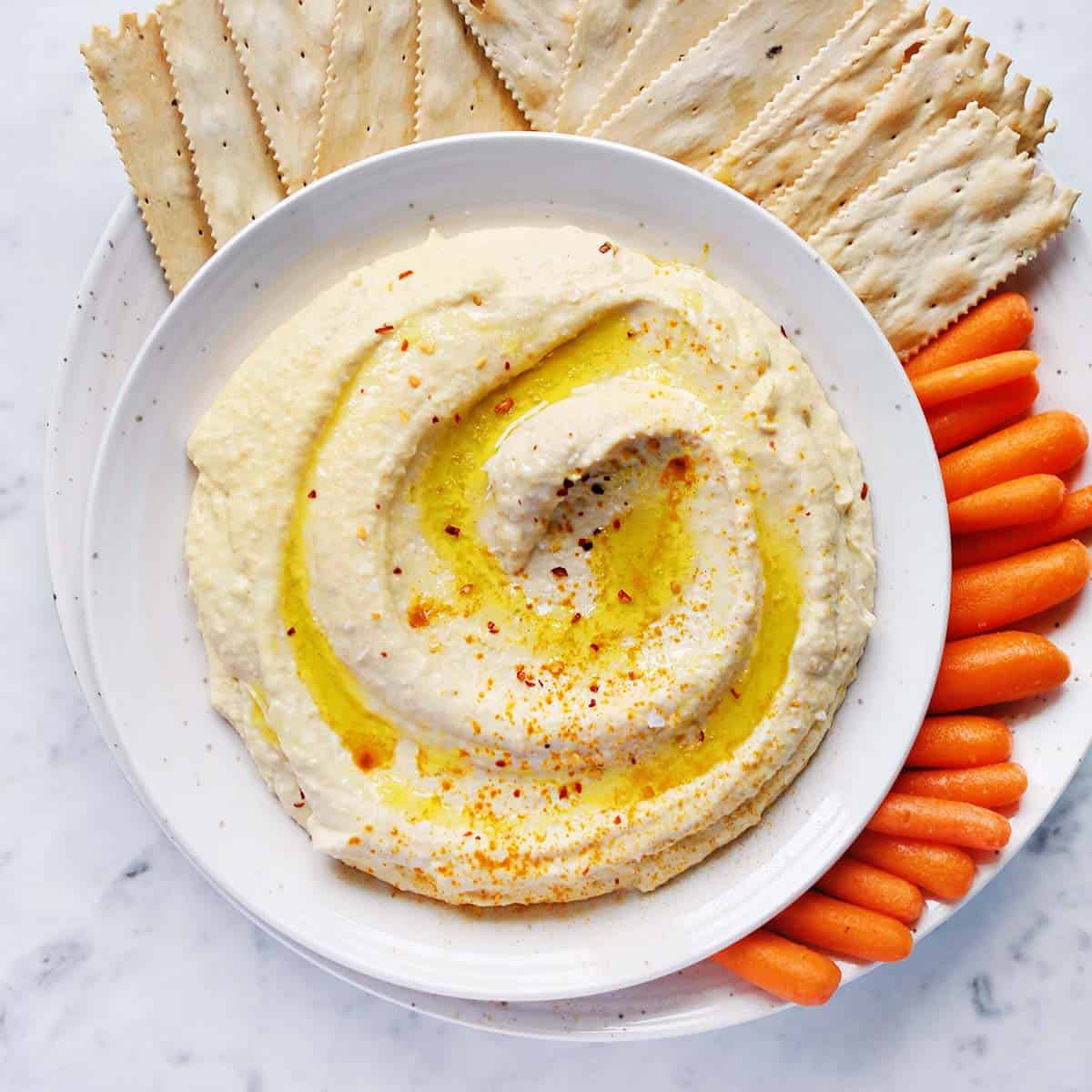
Ingredients
- Chickpeas – also called garbanzo beans
- lemon
- Tahini – sesame paste
- Garlic
- olive oil
I almost always use canned chickpeas, but if you’d like to cook your own before starting this recipe, you can.
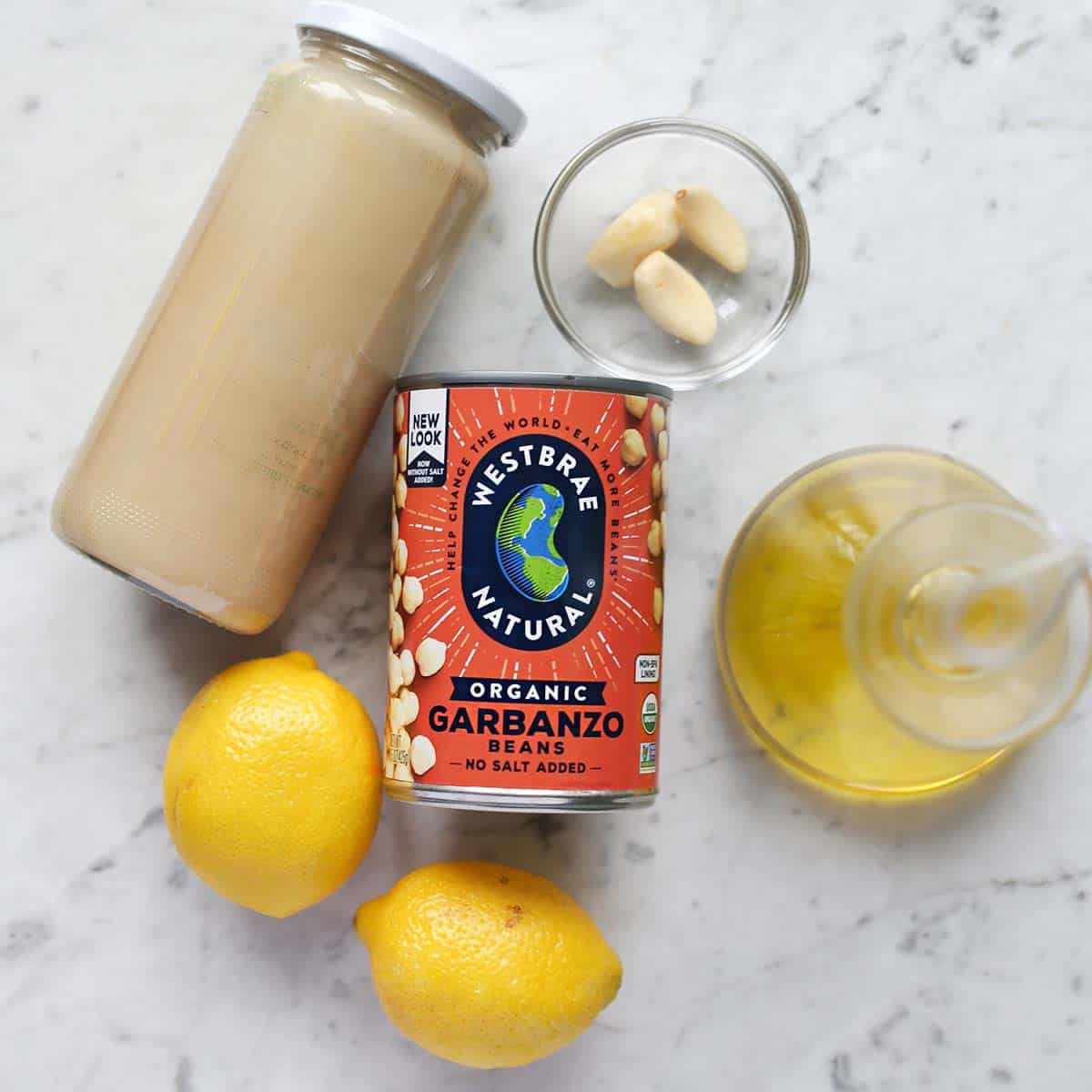
directions
In a food processor, combine lemon juice and tahini. Tahini has a consistency similar to natural peanut butter, so you may want to incorporate some air at this step to soften it up and help it incorporate into your hummus.
Next, place the chickpeas, garlic, and olive oil in the food processor. Stir everything until smooth.
Then I add 2-3 tablespoons of water or canned chickpea water (also called aquafaba).
Taste and add more lemon juice, oil, and salt and pepper as needed/to taste.
Drizzle over some olive oil for the finishing touch and sprinkle with paprika, other spices or pine nuts.
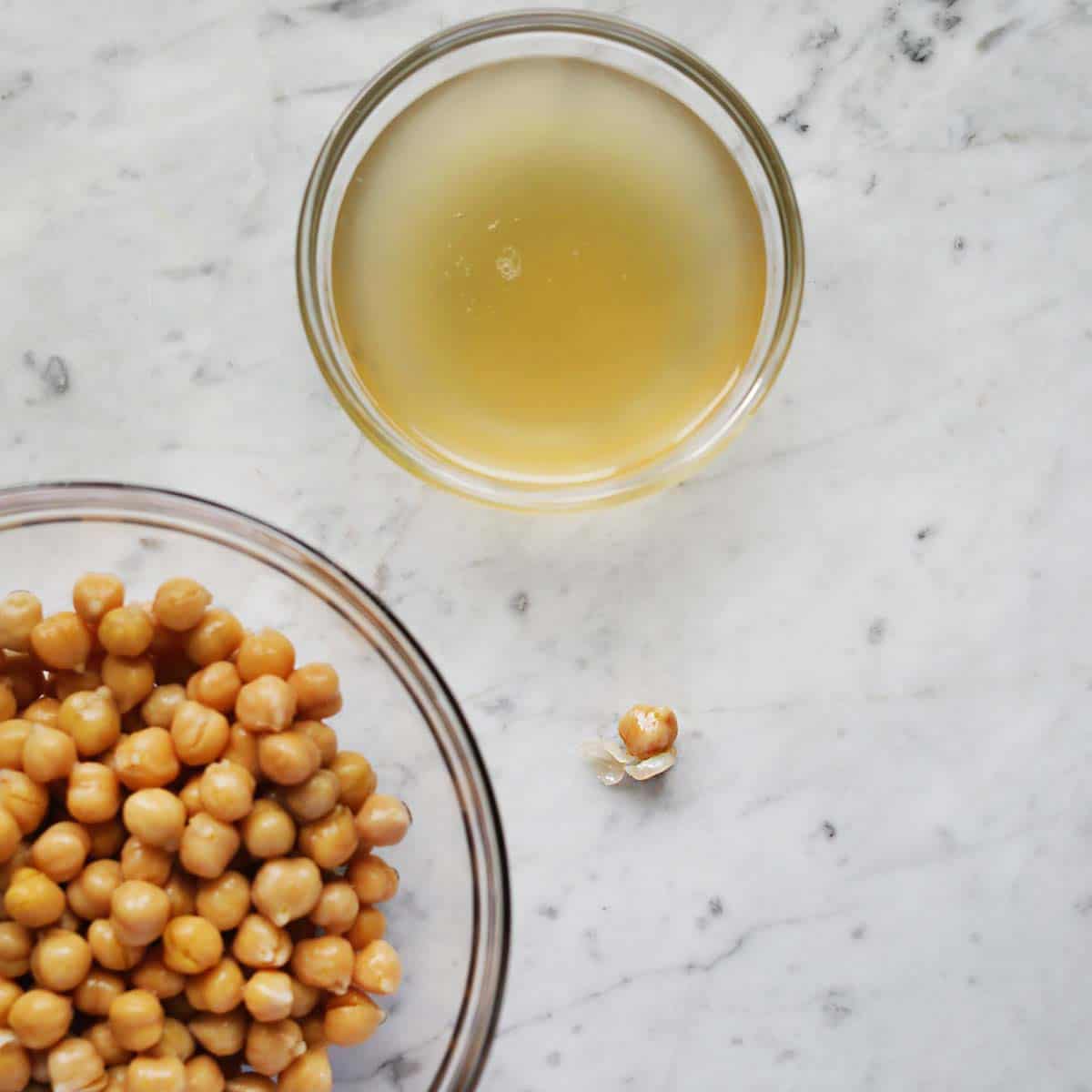
Tips and other ideas
- For extra-smooth hummus, I recommend removing the shells from the chickpeas before blending. I usually skip this step and this recipe is still creamy and delicious. But this is one way to achieve that ultra-silky, smooth texture.
- Feel free to experiment with this basic recipe by adding more spices, herbs or a few toasted nuts to the mixture as you mix.
- Hummus makes a great dip, served with warm pita and carrot sticks. You can also use hummus as a spread on sandwiches or wraps; or stir into a rice bowl.
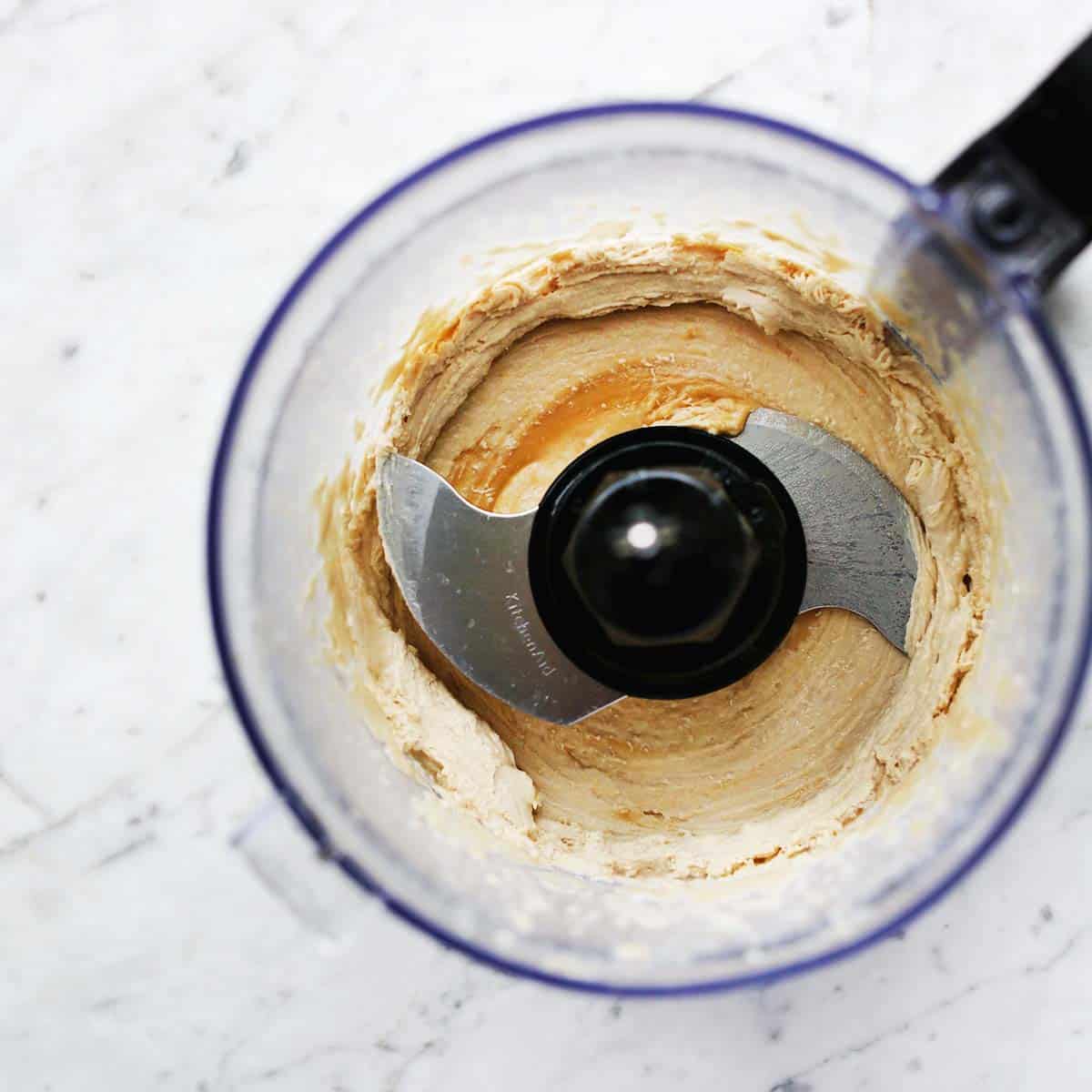
More great dip recipes
frequently asked Questions
Where does hummus come from?
Hummus has a rich history that stretches back thousands of years. Although the exact origin of hummus is unclear, it is thought to have originated in the Middle East, likely Egypt, Lebanon, or Palestine.
The word “hummus” actually means “chickpea” in Arabic and highlights the main ingredient used in this recipe. Over time, hummus spread throughout the region, including the Mediterranean, gaining popularity as a staple in Middle Eastern and Greek cuisine.
Is Hummus Good For You?
Hummus is a great source of plant-based protein, fiber, and other vitamins and nutrients.
How long can I store homemade hummus?
If you store homemade hummus in an airtight container in the fridge, it can easily last for four days or more.
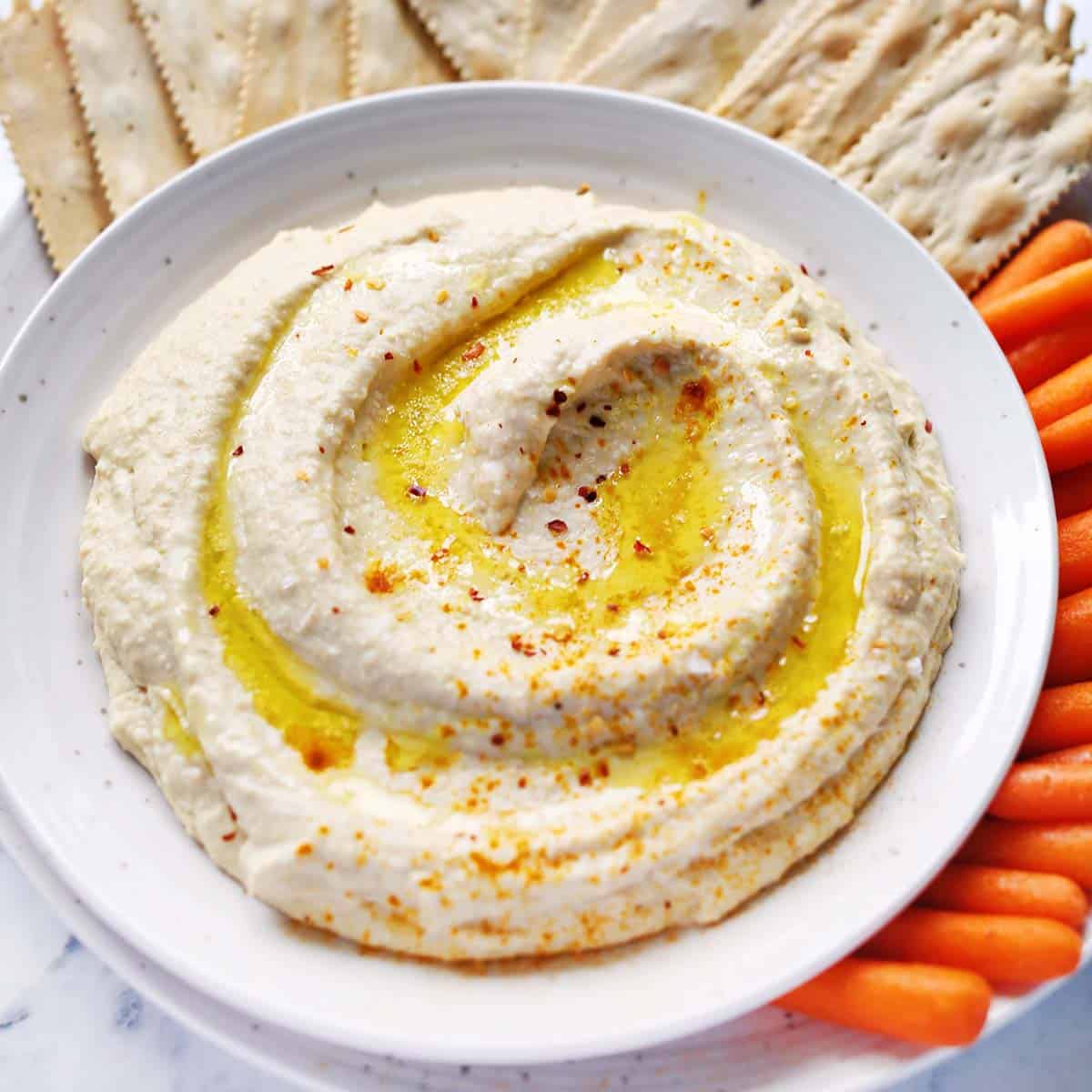
Whether you enjoy hummus as a dip, spread or side dish, its creamy texture and delicious flavor make it an ideal addition to any meal or gathering.
Making this recipe at home allows you to enjoy the authentic flavors while also adapting it to your personal preferences.
Get our FREE recipe guide with our most popular recipes of all time!
Get the guide

Free guide to popular recipes
Our 25 best recipes of all time!
Press

a creamy, delicious Middle Eastern dip
instructions
-
In a food processor, combine lemon juice and tahini.
-
Next, place the chickpeas, garlic, and olive oil in the food processor. Stir everything until smooth.
-
Then I add 2-3 tablespoons of water or canned chickpea water (also called aquafaba).
-
Taste and add more lemon juice, oil, and salt and pepper as needed/to taste.
-
Drizzle over some olive oil for the finishing touch and sprinkle with paprika, other spices or pine nuts.
Remarks
- Tahini has a consistency similar to natural peanut butter, so you may want to incorporate some air at this step to soften it up and help it incorporate into your hummus.
- Store homemade hummus in an airtight container in the refrigerator for 4-5 days.
Nourishment
nutritional information
Hummus – 5 ingredients
amount per serving
% Daily Value*
*Percent Daily Values are based on a 2000 calorie diet.
Note: Nutritional values are automatically calculated using Spoonacular for your convenience. Where appropriate, we recommend using your own nutritional calculations.










